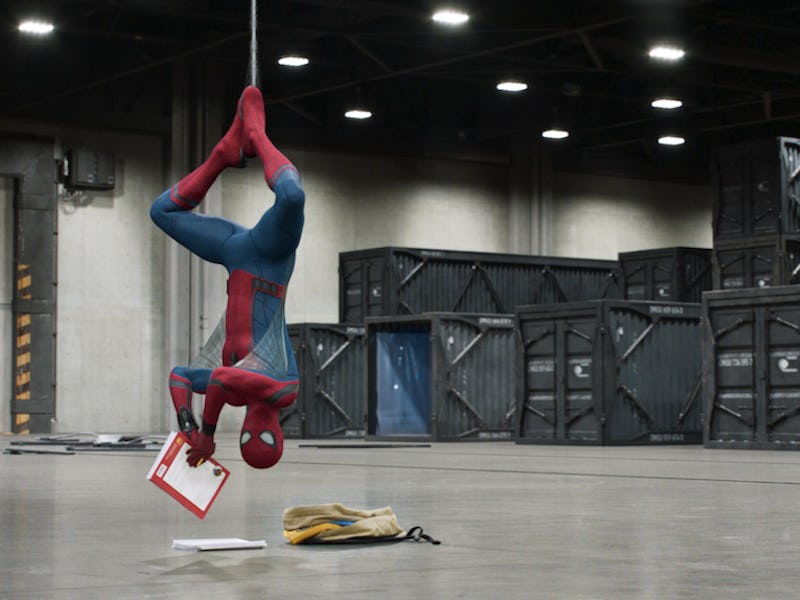
In the 2002 film that began Tobey Maguire’s long reign over the Spider-Man franchise, Peter Parker gave Mary Jane a smooch that defined a decade and defied millennia of basic physics. After saving Kirsten Dunst’s Mary Jane from a gang of attackers, Spidey gracefully descends from a strand of webbing for that infamous upside-down kiss. Throughout the epic moment, Parker’s strung-up body remains perfectly — and impossibly — still.
Anyone who’s ever tried to untwist their earbuds or has screwed up while playing with a yo-yo knows that anything held up by a string tends to spin as it descends. If you twist a rope or cable, it will right itself by spinning back the other way, often going back and forth several times before reaching a resting point. As the scientists behind a recent article in Applied Physics Letters explain, spinning ropes are a basic law of physics — one that’s not easily overcome. But one member of the animal kingdom that’s been able to defy it is the spider, and for the first time, researchers understand why.
When you see a spider descend from your ceiling without spinning wildly, you’re watching it use its natural tools to absorb the natural rotational energy of its webbing. Spiders (and the superheroes they inspire) can smoothly and safely descend via a type of webbing called dragline silk, the American and Chinese researchers explain in their study. On the molecular level, silk is less rigid than other types of “rope” — like thread, hair, or even steel cables — and that flexibility is what allows it to dissipate most of the rotational energy exerted upon it.
They used a device called a torsion pendulum to investigate just how much a strand of spider silk oscillates when a weight is hung from one of its ends. They found that thin strands of spider silk can absorb up to 75 percent of the force exerted upon them, and thicker webbing can handle even more. Their high-speed cameras showed that, unlike synthetic fibers and metals, spider silk deforms slightly when it’s twisted rather than staying rigid, like other materials. This deformation releases more than 75 percent of the strand’s potential energy, and its oscillations rapidly slow. After twisting, the silk strand partially returns to its original position, but it does so gradually, in a way that keeps rotation slow and to a minimum. That’s why Peter Parker could glide down all cool and suave-like to kiss Mary Jane and didn’t catch a draft, twirl around uncontrollably, and vomi on Mary Jane instead.
The unique properties of dragline silk keep Spider-Man from whirling around uncontrollably
The scientists found that the secret to silk’s stability is in its molecular structure. It turns out that the silk is made up of a complicated pattern of rigid and flexible molecules. The solid parts keep the spider from spinning out of control, and the more fluid components allow the silk to give in to wind and other forces so that it bends rather than snaps.
Because these clusters of rigid and flexible molecules break the spider silk into distinct chunks rather than one long, uniform strand, rotation is restricted to a small portion of the webbing. So while a given portion of the web may spin, the rest eventually balances itself out, resulting in perfectly stationary spiders — and superheroes who manage to avoid vomiting from dizziness.
If spider silk was like other threads, most of Spidey’s web-slinging would look more like this.